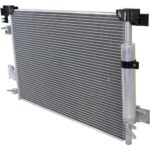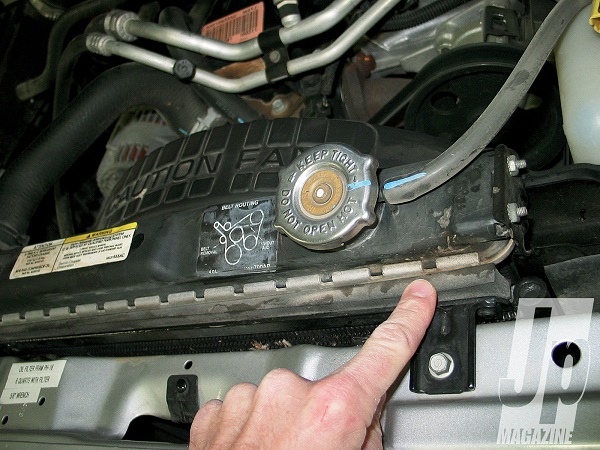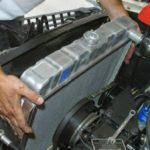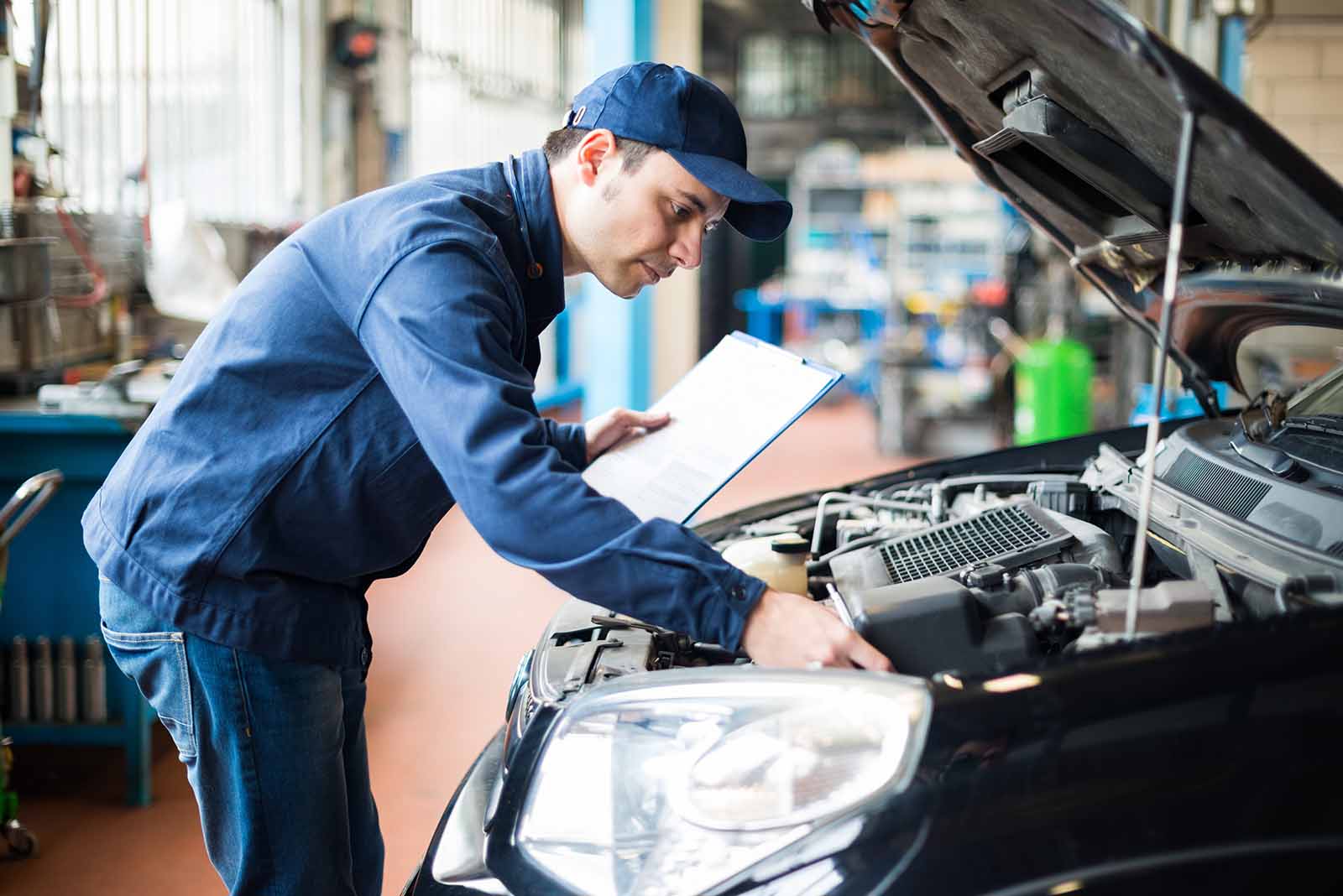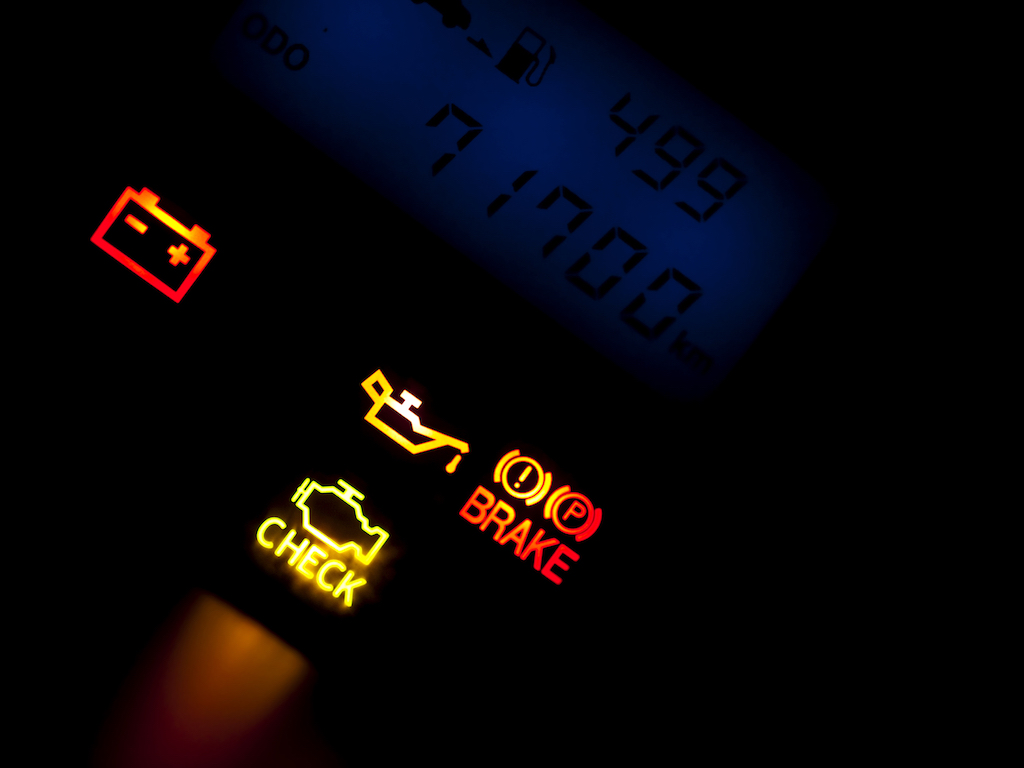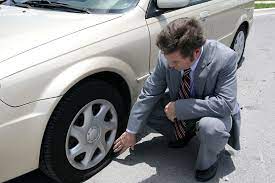In our article today, we shall be looking at what a car radiator does in a car. We shall also consider the functions, cost and how to repair a car radiator.
Radiators are heat exchangers that are used to cool internal combustion engines, such as those found in automobiles, piston-engined aircraft, railway locomotives, motorbikes, stationary generating plants, and other applications.
Internal combustion engines are frequently cooled by cycling engine coolant through the engine block, where it is heated, then through a radiator, where it loses heat to the atmosphere, and finally back to the engine. Engine coolant is normally made of water, although it can also be made of oil. A water pump is commonly used to push engine coolant to circulate, as well as an axial fan to force air through the radiator.
A radiator is connected to channels running through the engine and cylinder head, through which a liquid (coolant) is pushed, in automobiles and motorcycles with a liquid-cooled internal combustion engine. This liquid can be water (in climates where water does not freeze), but it is more typically a blend of water and antifreeze in climate-appropriate proportions. Ethylene glycol or propylene glycol are the most common antifreeze ingredients (with a small amount of corrosion inhibitor).
Read also: Top 7 Signs of Bad AC Compressor
What Does A Car Radiator Do?
Your car pumps coolant through your engine to keep it from overheating. Coolant is a fluid that absorbs heat and transports it away from the engine block. The coolant transfers the heat created by your engine to your radiator, which cools the liquid by blowing air across it and exchanging heat with the air outside your automobile.
Your coolant is passed through thin metal fins in the radiator, which allows the heat to travel much more freely to the air outside your automobile. There is sometimes a fan that blows air across the radiator to remove the hot air from your vehicle. Radiators are available in a variety of shapes, sizes, and styles, but their primary purpose stays the same. A radiator, in essence, cools the coolant, which subsequently cools the engine.
Where Is The Radiator In A Car?
A car’s radiator is found beneath the hood, which is the huge panel in the front of the vehicle. It has a clasp on the back to keep it shut. Inside the automobile, there is a release lever for the latch.
After you’ve opened the hood, look for the radiator toward the front of the vehicle. A lengthy rod folded beneath the hood may often be required to support the hood.
Because the radiator’s duty is to keep the engine cool and prevent it from overheating, it is situated near the engine. Some automobile models have a rear-mounted engine. The Volkswagen Beetle is one example of this. Car types with rear-engined engines may have radiators at the front or rear of the vehicle.
Signs Of A Faulty Car Radiator
If your radiator isn’t working properly, it can cause a variety of major issues. Here are four symptoms that your radiator is in need of repair or replacement:
Overheating
One of the most prevalent symptoms that your radiator is poor or failing is if your vehicle overheats frequently, especially under regular driving conditions. The only thing that keeps the engine cool is the radiator. However, just because the radiator is hot doesn’t indicate it’s broken. It could be as simple as replacing the coolant, or it could be something more serious.
Always Leaking Coolant
You have a leak if you see coolant (typically a bright yellow, green, or red liquid) accumulating under your parked vehicle. A coolant leak is a sign that something isn’t right. A leak should be repaired as soon as possible, whether it is in the radiator, a hose, or a problem in the engine block. To find the source of the leak, a pressure test is required.
Sludge Build Up In Radiator
Your radiator’s coolant should be bright yellow, green, or red in color. If your coolant becomes a rusty or oily hue at any point, it’s a sign that contaminants have built up in your radiator. Contaminants can have a significant impact on the functioning of your radiator. Your engine coolant might become discolored for a variety of reasons, and you should have it checked out by a mechanic as soon as possible.
Low Or Reduced Coolant
You most likely have a leak if you’re continuously adding coolant to your radiator or the “low coolant” sign on your vehicle’s dashboard keeps coming on. If your vehicle’s coolant needs to be replenished on a regular basis, you should take it to a reputable mechanic for an instant diagnosis. Maintaining proper functioning order in your radiator is critical to your vehicle’s overall health and performance.
Car Radiator Repair
If you’ve discovered a common sign of a leaking radiator, act promptly to have it repaired. To begin, you will require the best radiator stop leak you can get.
Locate a local supplier and purchase a bottle of K-Seal. K-Seal is a highly dependable radiator stop leak that will permanently repair and seal most leaks in the radiator or radiator casing, effectively eliminating those pesky pinhole leaks in your car radiator.
- Shake the K-seal bottle
- Put the radiator stop leak into the radiator
- Make sure you run the engine to operating temperature
The liquid solution will work its way around the engine, filling any pinhole leaks, holes, or cracks in your radiator or cooling system and permanently repairing them. And since its scientifically proven recipe, there’s no chance of overheating with this radiator stop leak.
Car Radiator Price/Cost
Whether you do it yourself or hire a mechanic to do it professionally, the cost of flushing a car radiator will vary. You’ll be able to keep prices down by only paying for the new coolant, which should be approximately $50, if you do it. If you take your automobile to a mechanic, the cost will be roughly $90, depending on the make and model of your vehicle.
An automobile radiator, on the other hand, can cost between $300 and $900 to replace. The labor charges include a mechanic checking for leaks, removing the radiator, flushing the entire system, and installing a new radiator. With such significant expenditures, it may be easy to overlook the leak while the vehicle is still operational. However, this has the potential to be harmful.
Can one drive with a broken catalytic converter?
It is risky to drive with a cracked radiator because the engine may overheat. Overheating is caused by a damaged radiator, which prevents the necessary quantity of coolant from reaching the engine. Make an appointment with the experts at Your Mechanic to get a complete diagnosis and radiator repair.
Is it worth fixing a radiator?
Having a properly functioning radiator in your automobile offers various advantages for the health of your vehicle – as well as your own safety. Replacing a faulty radiator assures that the remainder of your engine will not fail in the future. It can also help to prevent engine corrosion, which can be harmful to the rest of the engine.
How many hours does it take to fix a radiator?
The time it takes to replace a radiator varies depending on the individual and their skill set. It should take a trained technician 2 to 3 hours to complete. If you’re doing it for the first time, you might have difficulties finding the bolts and other pieces, and it could take you twice as long, or 7 to 8 hours.
How long can you drive with a cracked radiator?
You should not drive a car with a cracked radiator; it should be repaired as soon as possible because the radiator will build up pressure as it heats up, and the coolant will be pushed out very quickly, causing the leaking holes to get larger and more coolant to flow out of the radiator.
How many years does a radiator last?
The majority of radiators will last the lifetime of your car. A well maintained radiator should last for at least eight to ten years. However, in some cases, you may need to repair the radiator sooner than that in order to keep your automobile running safely.
Which is better- Aluminum or rubber radiator?
Radiators made of plastic are both less expensive and lighter. The tanks at either end of the radiator core, which is frequently constructed of aluminum and carries coolant through the cooling fins, are the most common plastic parts. “An aluminum core radiator will last just as long as a copper-brass radiator,” Gordon stated.

